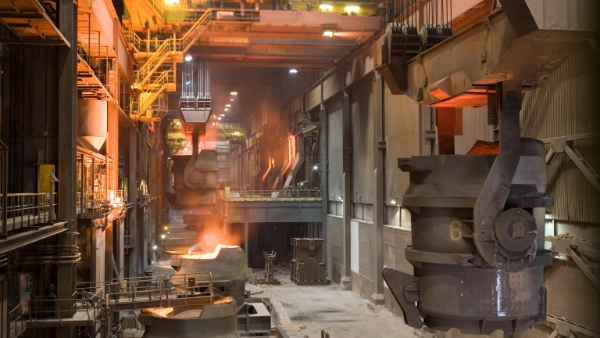For more control in the critical superheat area
In steel production, superheat is the term used to describe temperatures above 1,500 degrees. Metal melters work with such extremes to produce the typical glowing steel strands that everyone sees when they think of blast furnaces. During production, it is advantageous to have temperature control that is as accurate to the degree as possible. CasTemp Superheat the name of the patented system that Global Business Unit Heraeus Electro-Nite has been using in steel mills since 2020. The product ensures continuous temperature measurement in liquid steel.

Steel production figures are rising continuously year after year, and with them carbon dioxide emissions. This makes it even more important to reduce the carbon footprint in this area. One starting point is the steel refining process with the frequently used ladle arc furnaces (LAF). The LAF brings the molten steel to the temperature range required by the subsequent continuous caster. The trick now is to hit the optimum temperature in extreme ranges of more than 1,500 degrees Celsius – exactly between the current continuous temperature and the liquefaction point below which the steel begins to solidify.
"We have further developed our established CasTemp Wireless system into CasTemp Superheat precisely for this purpose, which makes it possible to stay as close as possible to the liquefaction temperature in the superheat range by measuring the current temperature and solidification point," explains George Humphrey, Research and Development Engineer at Heraeus Electro-Nite.
More environmentally friendly, safer and more economical
Just how much potential there is in this technology is shown by Heraeus’ own investigations in steel mills. They show that many operate with excess temperatures of 30 to 50 degrees, which offers great scope for reductions. And here, every degree counts. A steel mill producing ten million tons a year in 300 ladles saves nearly 4,700 megawatt hours (MWh) of energy with just a superheat reduction of one degree. At five degrees less and assuming costs of 60 euros per MWh, 42 euros could be saved per ladle. Extrapolated over the year, this means around 10,000 tons less CO2 for the plant, energy costs reduced by around 1.4 million euros and, together with reduced consumables such as graphite electrodes, a total saving of a good two million euros. At the same time, thanks to constant monitoring with the CasTemp Superheat system, there is also less risk of the molding area of the continuous caster breaking due to excessive heat and insufficient cooling. Liquid steel then escapes in an uncontrolled manner, posing a great danger to the operating crew.
The patented system is currently unique on the market. It consists of specially designed sensors for monitoring the current temperature and liquefaction point, transmission units, a mobile receiver and software to evaluate the data later on a computer in a larger context. For easy and safe handling, it is completely radio controlled and can be integrated into existing CasTemp Wireless systems from Heraeus Electro-Nite by a software upgrade. To date, a trial series is underway in 35 mills, which are already benefiting from reduced CO2, lower energy costs, improved steel quality and an accelerated production process.
- published: October 2021 -